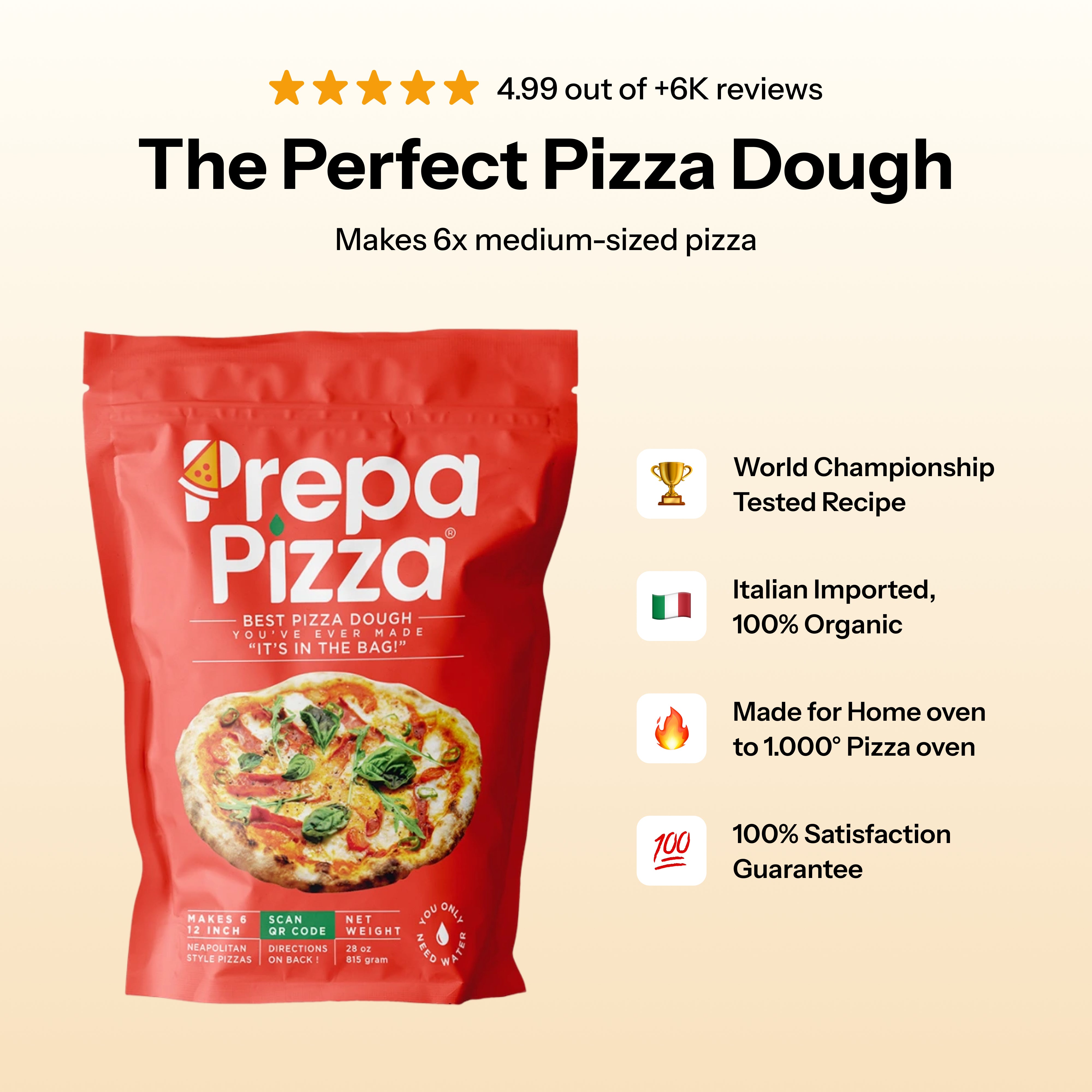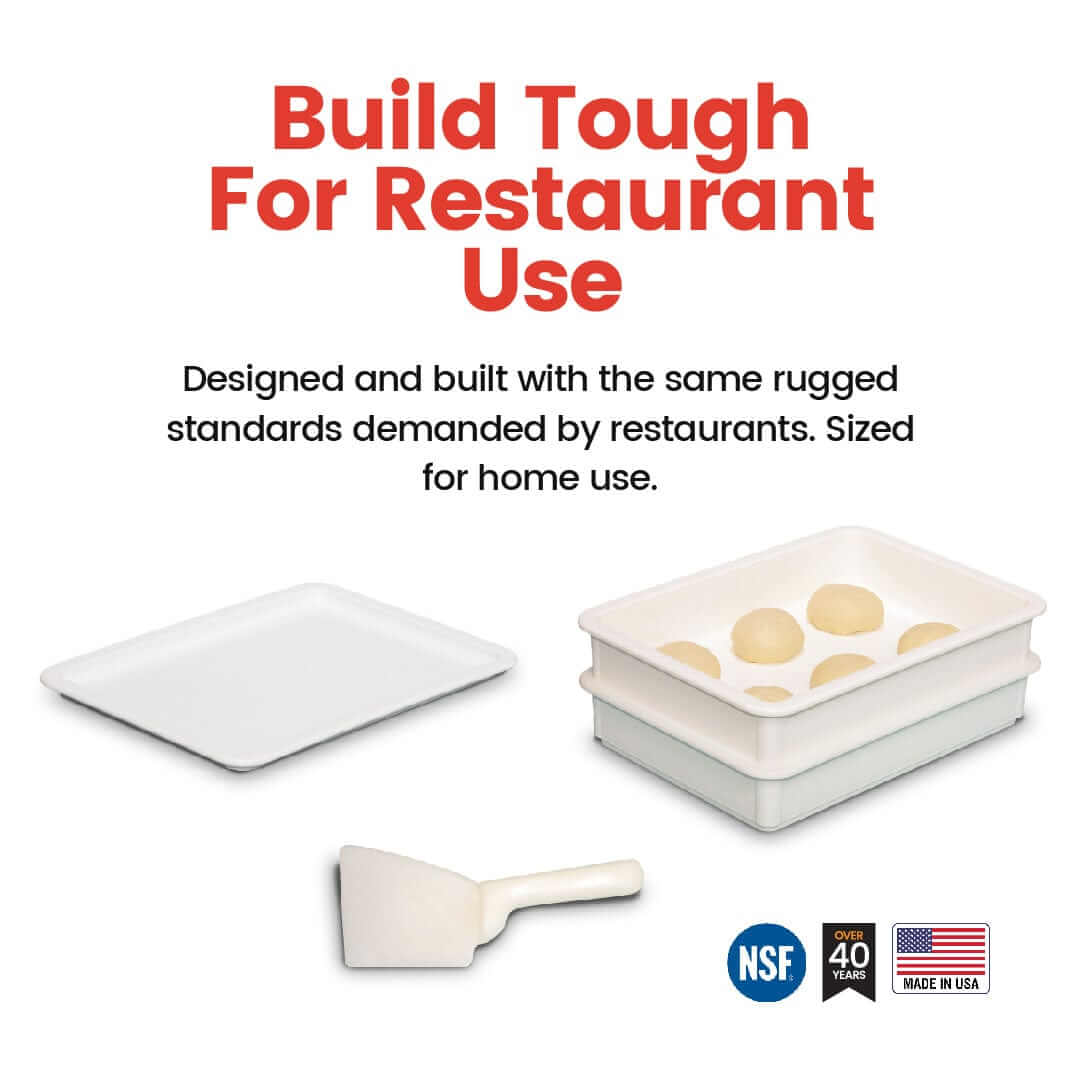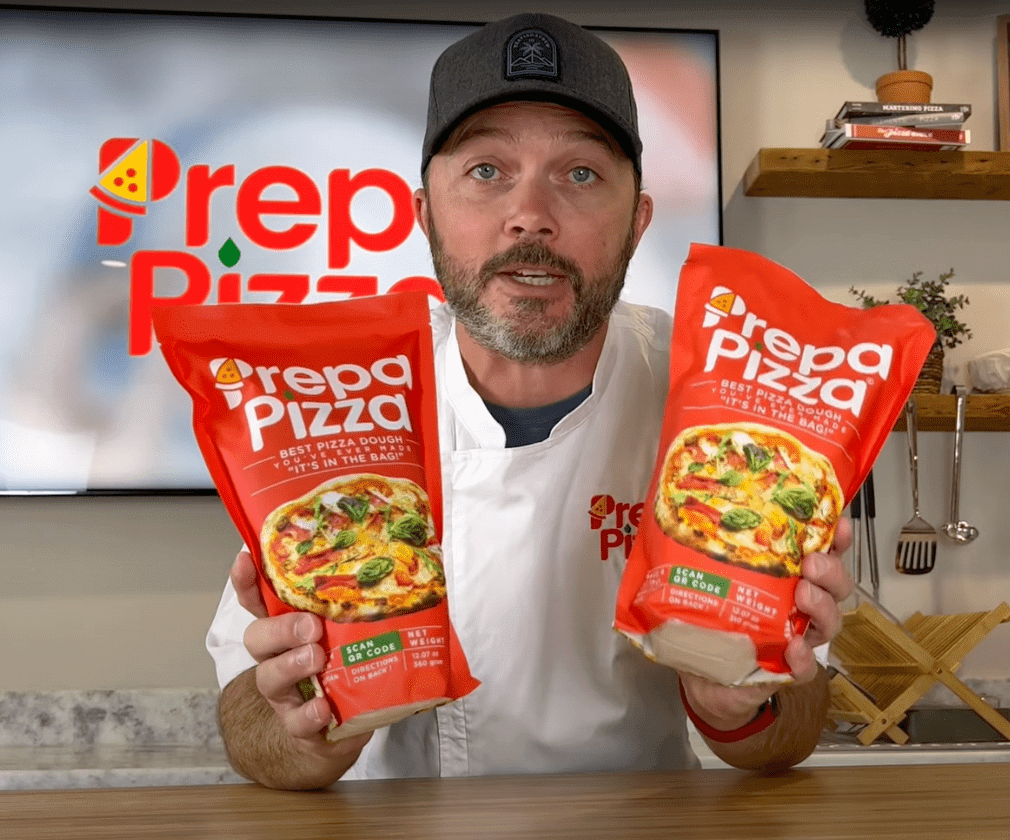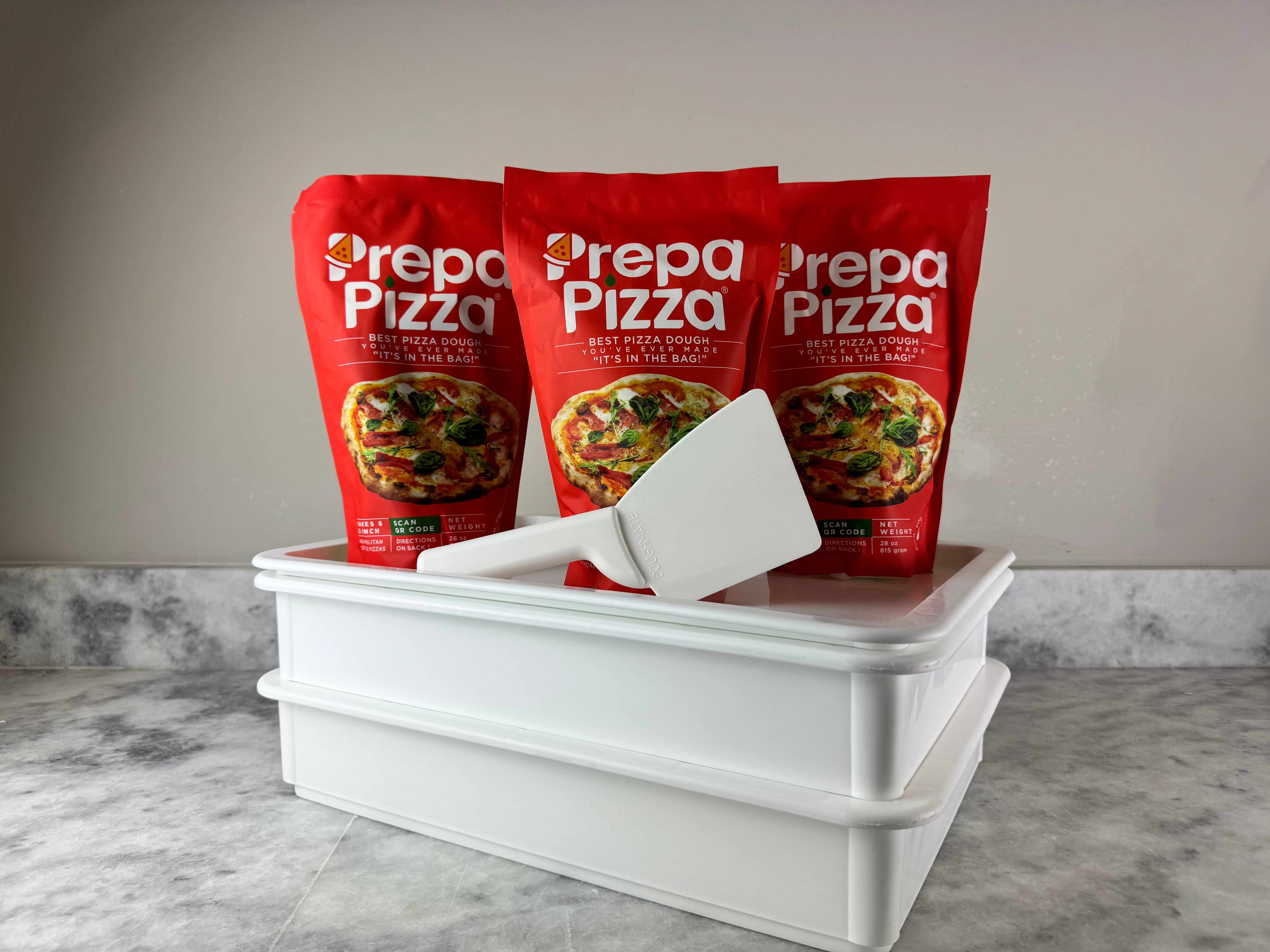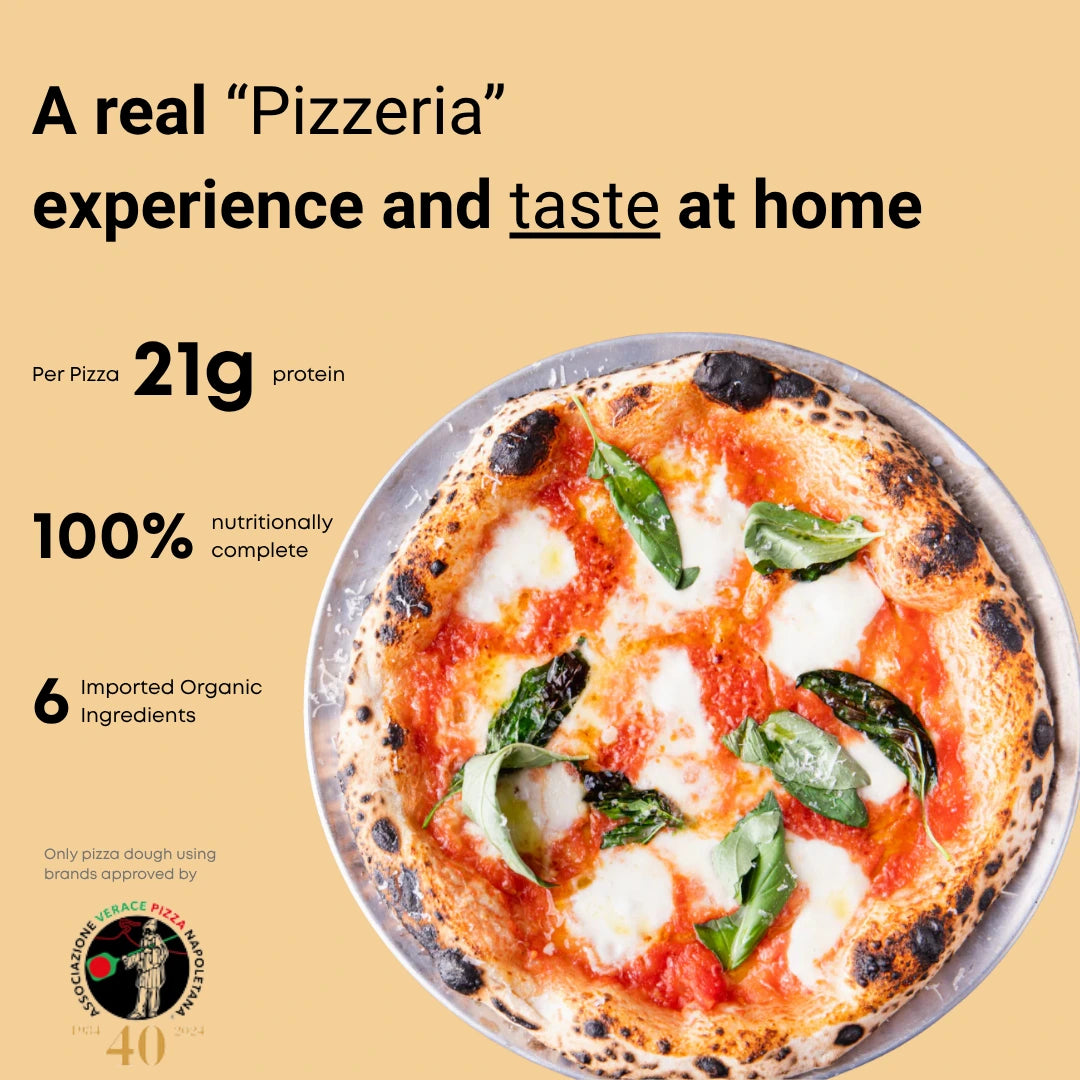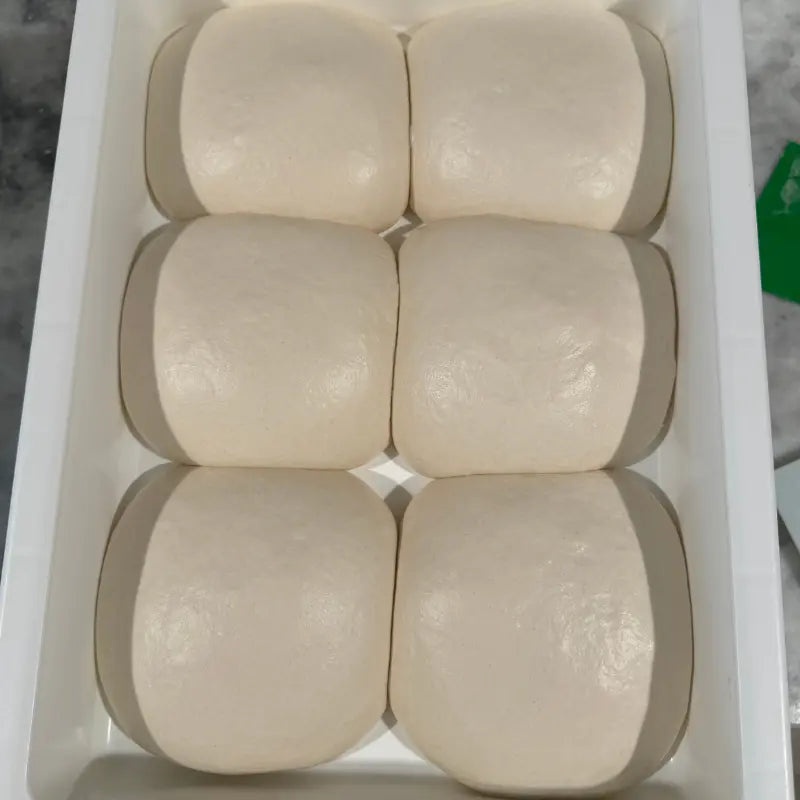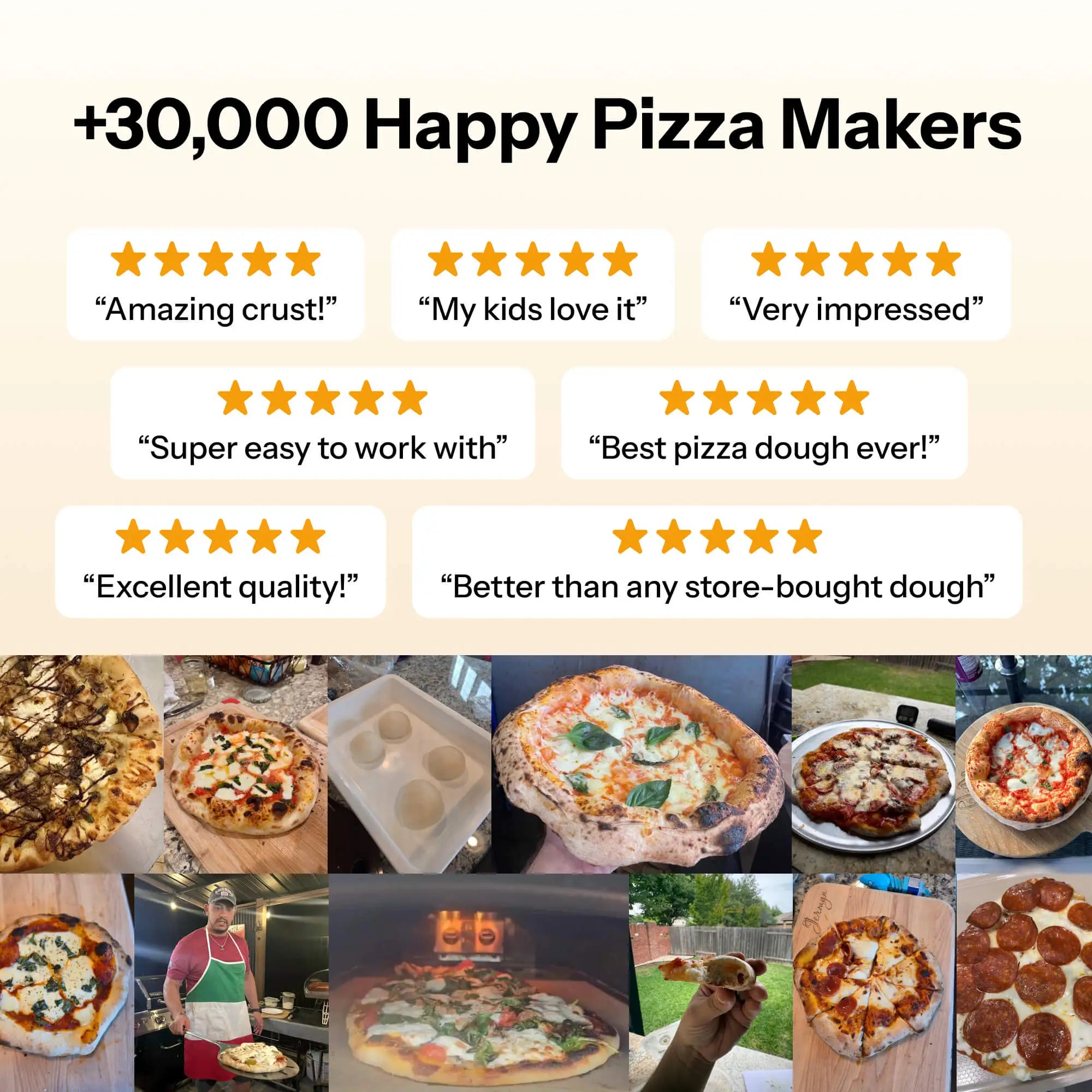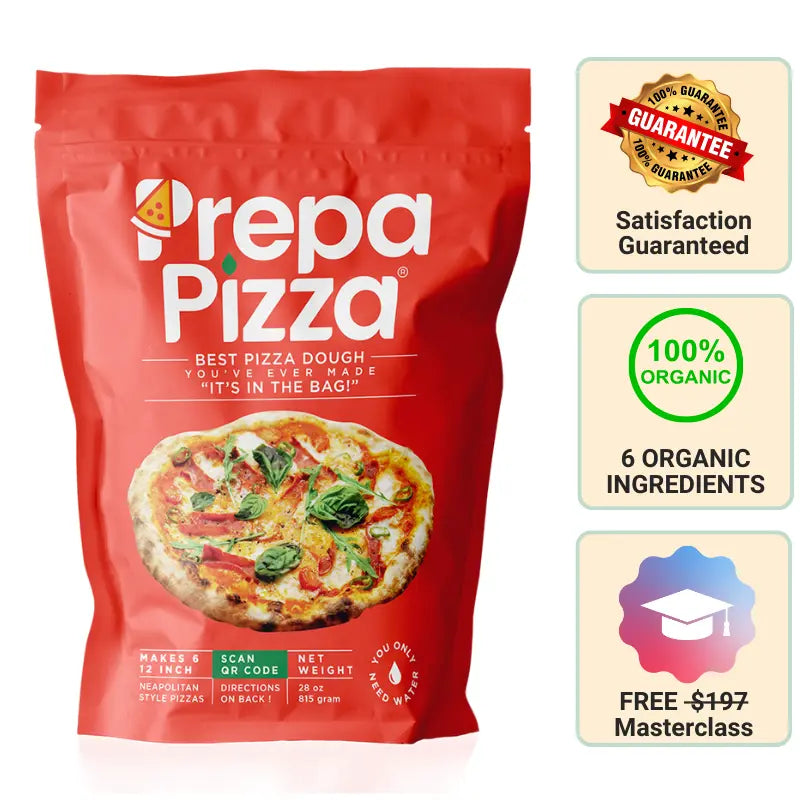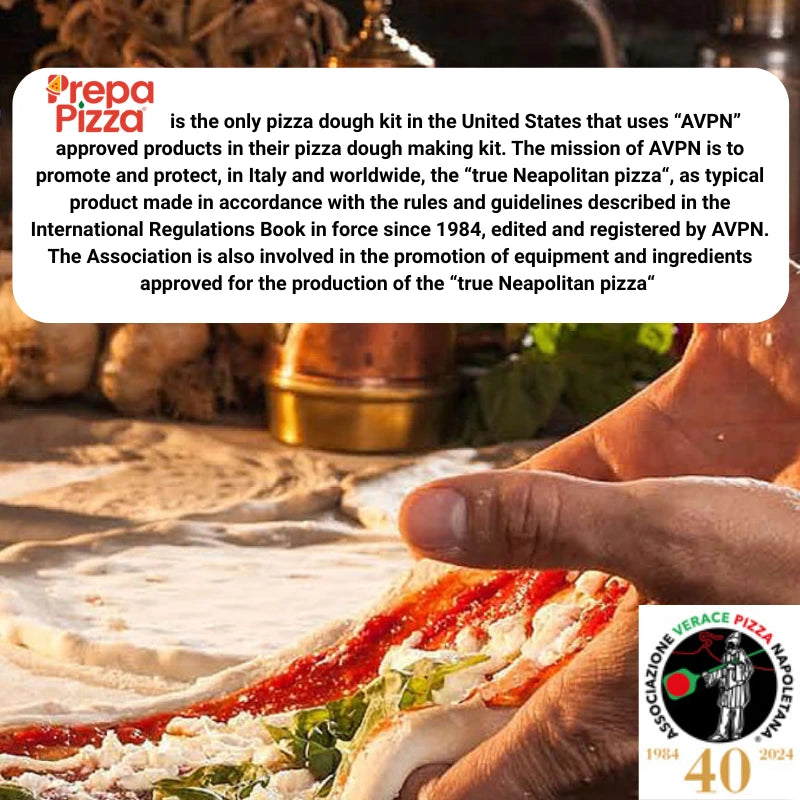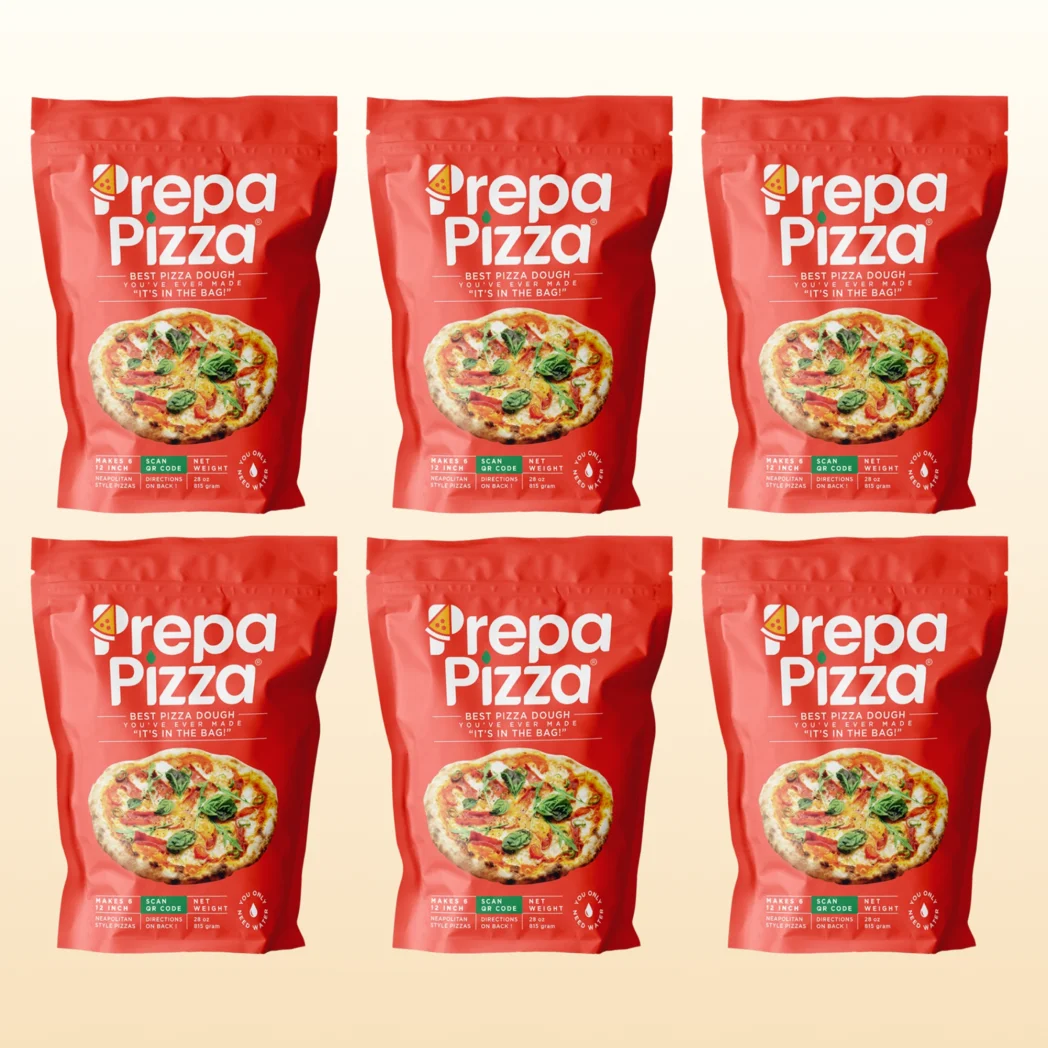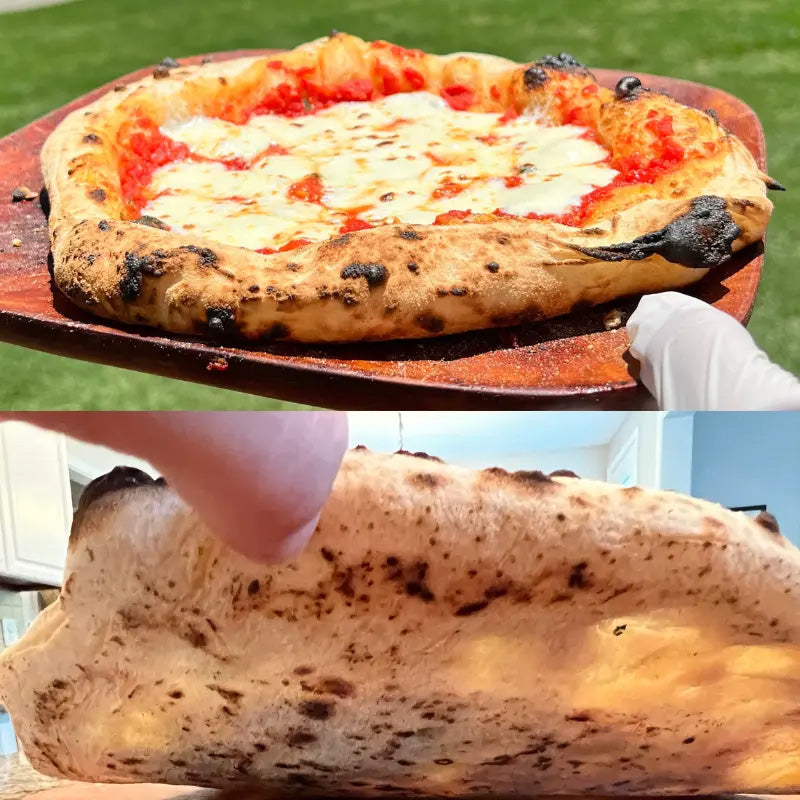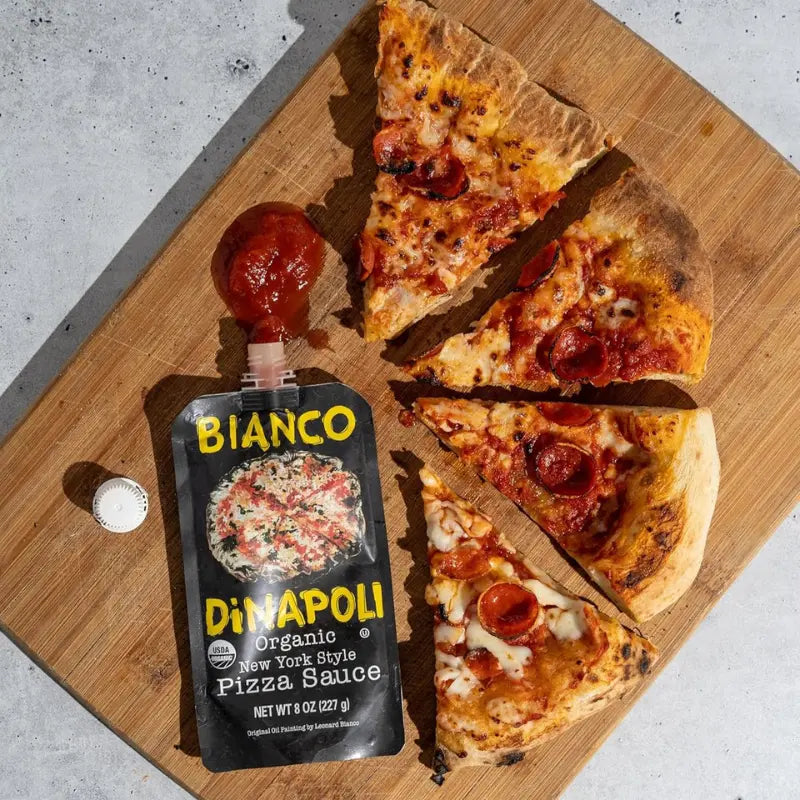
Pizza Size Calculator Guide for Choosing the Perfect Pizza Every Time
When you're planning your pizza night, knowing the right size to order or make can save you money and reduce waste. A pizza size calculator lets you measure the surface area of pizzas, helping you compare options and get the best value. Using a pizza size calculator simplifies your decision by showing exactly how much pizza you’ll get for the price, ensuring you order or make just the right amount.
If you’re making pizza at home, starting with high-quality ingredients is essential. Prepa Pizza offers premade dough made from premium, restaurant-quality ingredients that help you achieve a perfect base for your pizza. You can find their dough kit here to make your pizza preparation easier and more reliable while focusing on the right pizza size.
With a pizza size calculator, you can also decide how many pizzas you need for your gathering based on appetites and group size. Using Prepa Pizza’s premade dough combined with precise size calculations ensures your pizza party is both efficient and satisfying, avoiding too much or too little pizza for your guests.\ https://www.prepapizza.com/products/prepa-pizza-dough-kit?_atid=ASKIZXfltwWZPVrz7efsK3EbTcxmqi
How the Pizza Size Calculator Works
Using a pizza size calculator helps you understand how many pizzas to order based on your group size and appetite. It converts your inputs into a practical pizza quantity, considering size, slices, and number of people. This precise calculation ensures you get the right amount of pizza without waste or shortage.
If you’re making pizzas at home, using a quality premade dough like Prepa Pizza’s premium dough kit can simplify preparation while guaranteeing a restaurant-quality crust. You can explore their dough options here: Prepa Pizza Dough Kit.
Input Variables and Calculations
The calculator starts by asking for key details: the number of people you plan to serve, the pizza size (usually in inches), and the number of slices per pizza. You may also input appetite levels—light, average, or heavy eaters—to better estimate how many slices each person will likely consume.
Some calculators allow specifying how many children will attend, since kids generally eat fewer slices. This helps avoid over-ordering. The essential formula uses the diameter to calculate the pizza’s area, which then relates to slice size. By combining these factors, the tool determines the total number of pizzas you should order.
Understanding Pizza Size and Area
Pizza size is generally measured by diameter, which directly affects the surface area and, consequently, how much pizza you get. The size to area conversion follows the circle area formula: Area = π × (radius)².
For example, an 18-inch pizza offers over twice the area of a 12-inch one, not just 1.5 times more. This is crucial when comparing prices or deciding between larger or multiple smaller pizzas.
Calculating area per slice helps standardize ordering. If you want eight slices from a 14-inch pizza, the calculator finds the area per slice, which you can compare across pizza sizes to choose the best fit for your group. This makes ordering precise when using premium dough like that from Prepa Pizza.
Interpreting the Results
Once the calculator provides a pizza quantity, it usually breaks down the information into number of pizzas and slices needed. It may also recommend specific sizes based on input appetite levels and group size.
You can adjust the inputs to see how the total changes if you increase the number of guests or opt for larger slices. This flexibility helps you manage budget and leftovers efficiently.
If you use Prepa Pizza dough, you can prepare customized sizes if desired, matching results closely with the calculator’s recommendations to optimize your baking and serving. Understanding these results ensures your pizza event runs smoothly without surprises.
For convenient pizza planning tools, try a pizza calculator to apply these calculations directly.
Selecting the Right Pizza Size
Choosing the proper pizza size depends on how many people you’re serving and their appetite levels. Using Prepa Pizza's premade dough, which you can find on their product page, ensures consistent quality regardless of the size you select. Understanding the typical portion sizes can help you avoid waste and control costs effectively.
Knowing the differences between small to extra-large pizzas helps you plan your order precisely. You also want to consider specialty options and when a large pizza is the most efficient choice.
Small, Medium, Large, and Extra-Large Pizzas
Small pizzas usually range from 8 to 10 inches in diameter and are ideal for one or two people. They’re perfect if you want individualized servings or are feeding kids.
Medium pizzas typically measure 12 inches, serving about two to three people. This size balances portion size and price, making it popular for casual meals.
Large pizzas at 14 inches can feed around three to five people. They are often the best choice when feeding a group or party, offering more pizza per dollar.
Extra-large pizzas are usually 16 to 18 inches or more and serve five or more people. They’re great for big gatherings but require larger baking space, so plan accordingly if using your own oven with Prepa Pizza dough.
When to Choose Large Pizzas
Large pizzas are most practical when you have multiple guests or a high appetite group. If your party includes four or more hungry eaters, a large pizza ensures everyone gets enough.
Ordering a single large pizza often costs less per square inch compared to buying several smaller ones. This makes large pizzas a budget-friendly option without sacrificing quantity.
When you use Prepa Pizza’s premade dough, you can guarantee even cooking and a consistent crust regardless of pizza size. The dough's quality supports a sturdy base, which is important for large pizzas with heavy toppings.
Custom Sizes and Specialty Options
Some pizzerias offer custom sizes or specialty crust options like thin, thick, or stuffed crust. With Prepa Pizza dough, you can create these variations at home, allowing you to tailor pizza thickness and texture.
Custom sizes let you match your pizza truly to the occasion, whether that's a personal-sized pizza or a party-sized rectangular pizza for easier slicing.
Specialty crusts can also impact how many slices you get and how filling the pizza is. Consider these factors when planning your pizza order or baking with Prepa Pizza premade dough kits to meet your precise needs.
Optimizing Pizza Orders for Groups
To get the right amount of pizza for your gathering, you need to consider how many people will attend, how hungry they are, and the size of pizzas you'll order. Using Prepa Pizza's premade dough, available through their Prepa Pizza Dough Kit, ensures you get a premium base to build the perfect pizza for your group. This helps maintain quality while you focus on sizing and portions.
With these factors set, you can precisely figure out how many pizzas to prepare without waste or shortage.
Calculating Number of Pizzas for Parties
Start by estimating the total number of guests for your pizza party. A common rule is 2-3 slices per adult and 1-2 for children. If you know your group well, adjust upward or downward based on appetite.
Next, decide the pizza size you will make with Prepa Pizza's dough. The most typical sizes are 12-inch (8 slices) and 16-inch (12 slices). Divide the total slices needed by the slices per pizza size to get the number of pizzas to order or bake.
For example:
| Guests | Slices per Person | Total Slices Needed | Pizzas (16-inch, 12 slices) |
|---|---|---|---|
| 10 | 3 | 30 | 3 |
| 15 | 2.5 | 37.5 | 4 |
Keep in mind, rounding up will help avoid running out.
Slices Per Person and Group Size
The number of slices each person will eat varies based on age and appetite. Adult men tend to eat 3 slices on average, women around 2-3, and kids 1-2 slices. Larger groups often have mixed appetites, so it's good to calculate an average based on your attendees.
Consider this simplified breakdown:
- Adults: 2.5 slices each
- Children: 1.5 slices each
If you invite 20 adults and 10 kids, estimate:\ (20 x 2.5) + (10 x 1.5) = 50 + 15 = 65 slices total.
Using Prepa Pizza’s dough ensures the crust quality stays consistent regardless of how many pizzas you need.
Factoring in Appetite and Preferences
Appetite can vary with the occasion. For example, a lunch pizza party usually means lighter eating compared to dinner. Also, guests with larger appetites or teenagers may require more slices. Consider these factors when ordering.
Preferences are important, too. You may want to prepare a couple of differently topped pizzas or crust types to accommodate dietary needs or flavor preferences.
With Prepa Pizza’s high-quality dough, you get a versatile base that supports a variety of toppings and crust styles, helping satisfy different tastes while keeping preparation streamlined. Adjust slice estimates and pizza counts accordingly to avoid excess leftovers or shortages.
Accounting for Dietary Needs and Other Considerations
When planning how much pizza to order or make, you must consider the specific dietary needs of your group. Ingredients and crust options can affect portion sizes and the number of pizzas needed. Customizing your order ensures everyone can enjoy the meal comfortably.
Using Prepa Pizza’s premade dough allows you to easily experiment with different crust types while maintaining restaurant-quality texture and flavor. You can find their premium dough kits here, which provide a reliable base to support various dietary preferences.
Addressing Dietary Restrictions
Many people follow diets that exclude certain ingredients, including dairy, gluten, or animal products. When ordering or preparing pizza, you should account for these restrictions by selecting suitable toppings and dough.
Inform your guests beforehand about available options, and plan based on their needs. For example, those avoiding gluten require separate preparation areas to prevent cross-contamination. Using Prepa Pizza’s premade dough lets you control ingredients directly, essential for avoiding allergens.
Additionally, you may want to provide both vegetarian and vegan options. Tracking attendees with these restrictions helps you avoid waste and ensures enough pizza for everyone without oversupply.
Options for Gluten-Free Pizza
Gluten-free pizza has become a staple for many with gluten sensitivities or celiac disease. Since traditional dough contains wheat flour, substituting dough is necessary.
Prepa Pizza offers a versatile base that you can combine with gluten-free flour blends or use their dough kit to start a homemade gluten-free crust. This flexibility lets you achieve the texture and chewiness expected in quality pizza.
Remember that gluten-free crusts sometimes require different cooking times and temperatures. Adjustments in how many pizzas you order or make might be needed, especially if gluten-free eaters tend to eat more or less than others. Always label gluten-free pizzas clearly to prevent any mix-up.
Popular Toppings and Customizations
The choice of toppings affects how much pizza each person consumes. Heavier toppings like extra cheese or meat tend to satisfy more hunger per slice, while lighter vegetable toppings may leave some wanting more.
Common popular toppings include pepperoni, mushrooms, onions, and bell peppers. Offering a variety ensures guests with different tastes are accommodated. You can also customize pizza size and slice count to match the preferred topping load.
Using Prepa Pizza’s premium dough allows you to maintain a consistent base, so adding toppings won’t compromise the overall quality. When planning orders, consider how combinations influence appetite and adjust quantity accordingly to avoid shortages or excess.
Cost and Value Calculations
Understanding the relationship between pizza size, price, and value helps you get the most for your money. Using clear comparisons and considering factors like tipping and special offers can improve your overall cost-efficiency when ordering or making pizza with Prepa Pizza’s premade dough, which offers consistent quality and ease of use. You can explore Prepa Pizza’s premium premade dough kit for restaurant-quality pizza at home, paired with smart cost calculations to optimize your spending.
Comparing Price by Pizza Size
Pizza prices are often based on diameter, but that alone doesn’t tell the full story. The area of the pizza increases by the square of its radius, so a 16-inch pizza actually has about twice the surface area of a 12-inch pizza. This means cost per square inch matters more than the sticker price.
A pizza calculator can convert diameter and price into cost per square inch, helping you identify which size offers the best value. For example:
| Pizza Size | Diameter (in) | Area (sq in) | Price | Cost per sq in |
|---|---|---|---|---|
| Small | 10 | 78.5 | $8 | $0.10 |
| Medium | 12 | 113.1 | $12 | $0.11 |
| Large | 16 | 201.1 | $18 | $0.09 |
This table shows the large pizza offers the lowest cost per square inch, often the more economical choice. Using Prepa Pizza’s premade dough lets you create any size easily at home while still controlling costs efficiently.
Utilizing Tip Calculators
Tipping is a common but sometimes overlooked part of the total pizza cost, especially when ordering delivery. Using a tip calculator can help you budget appropriately and avoid surprises.
Most tipping guidelines suggest 15-20% of the pizza price. By factoring this into your pizza calculator, you can better estimate the true cost of your order. For example, a $20 pizza with 18% tip totals $23.60. This is important if you plan to choose between multiple deals or orders.
If you’re making pizza at home using Prepa Pizza’s dough, you can save on tipping costs entirely, improving overall value. Tip calculators remain useful for budgeting when dining out or ordering in.
Saving with Special Offers
Coupons, bundle deals, and limited-time discounts often affect pizza’s total price. The best pizza calculators allow you to input coupon prices or deal specifics to adjust the cost per square inch accordingly.
For instance, a large pizza priced at $18 could be $15 with a coupon, changing the cost per square inch from $0.09 to around $0.075, offering greater savings. Combining such deals with quality premade dough from Prepa Pizza lets you save money without sacrificing quality.
Track ongoing promotions and enter them in your pizza calculator before ordering to confirm the best option available. This prevents missing out on savings that might not be obvious just from the menu price.
Frequently Asked Questions
Understanding the right pizza size depends on factors like the number of people, appetite, and slice size. Using Prepa Pizza’s premade dough, you can create consistent pizzas that meet these needs precisely. Their premium dough kit ensures you have a reliable base for any size pizza you plan to make or order.
Having quality dough like Prepa Pizza’s simplifies planning because you start with a solid, restaurant-quality foundation that bakes evenly. This consistency lets you focus more on portion sizes and toppings to satisfy your guests.
How do you determine the appropriate pizza size per person?
You calculate how many slices each person will likely eat based on appetite—usually 2-3 slices for adults, 1-2 for kids. Divide that by the number of slices per pizza, which depends on the pizza size and cut style.
Adjust for factors like hunger, dietary restrictions, or if you plan extras. Using a tool like a pizza calculator can help refine your estimate.
What is the area of a 12-inch pizza?
The area is calculated with the formula for a circle: π × radius². For a 12-inch pizza, the radius is 6 inches.
This gives an area of about 113 square inches.
How many slices does a 33 cm pizza typically yield?
A 33 cm pizza (around 13 inches) usually yields 8 slices.
This is a common size for sharing and balances slice size for most eaters.
Can you explain the 3/8 rule for pizza sizing?
The 3/8 rule suggests that as pizza diameter increases, the area (and pizza quantity) increases by the square of the diameter ratio, roughly 3/8 more per inch in diameter.
This means a small increase in diameter results in a larger increase in pizza surface, affecting how much pizza you need for your group.
What is considered a standard pizza size in centimeters?
Standard sizes often include 30 cm (12 inches), 33 cm (13 inches), and 38 cm (15 inches).
These sizes balance serving portions and are common for ordering or making pizzas with Prepa Pizza dough.
How do you compare different pizza sizes for a group?
Compare the surface area to see how much pizza you get, not just diameter. For example, two 30 cm pizzas have more area than one 45 cm pizza.
Calculating total slices or square inches helps you ensure you order or make enough pizza for your guests, maximizing value and satisfaction.
Using Prepa Pizza’s premade dough helps maintain quality and consistency regardless of size selected.



